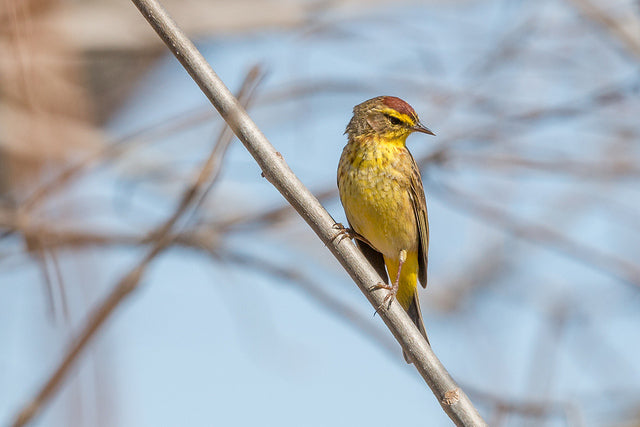Offer
Provide additional details about the offer you're running.
Provide additional details about the offer you're running.
Provide additional details about the offer you're running.

While the name might elicit stretches of white sand beaches, sunburnt tourists and palm trees, the fact remains that this unique warbler species is one of the northernmost breeding of all warbler species. Only one other species of warbler nests further north than the palm and that is the blackpoll warbler who can be found nesting as high as Nunavut, the Northwest Territories, northern Yukon and Alaska.
Here in the east, the subspecies of the palm warbler you might be familiar with is otherwise known as the yellow palm warbler, which like other warbler species, migrates earlier than most other birds, including their western counterparts.
A traditionally eastern bird, they can be found throughout the American Midwest and eastern seaboard during periods of migration. When it comes to summer breeding habitat, these birds call much of Canada home, stretching from Nova Scotia across to Alberta in the Canadian Boreal Forest.
These ground-nesting birds spend their summers in bogs and thick expanses of evergreen trees and dense cover. During migration, they can be found in more open spaces as they forage for food to fuel their long flights.
Much the same as other warblers, these birds are small, but are noticeably more robust than other species of warblers. Where these birds differ from other warblers is their penchant for moving about on the ground, rather than high in the treetops. As a bird that both forages and nests on the ground, these birds are often sighted in open areas and are almost always wagging their tails. It is this activity that is perhaps the easiest route for identification of this unique warbler species.

Image: Kelly Colgan Azar Flickr
Here in the east, as their subspecies name suggests, these birds sport a more yellow coloured plumage than their western relatives. While consistently olive in colour, in our neck of the woods, these birds are found with a striking yellow belly and their colouring remains relatively consistent across both sexes.
Noted to sound much the same as a chipping sparrow, the song of the palm warbler is often mistaken. Consisting of between 5-15 buzzy notes, their song sounds more like a trill than anything else. Their vocal repertoire also consists of a pair of calls one while in flight and another alarm-style smack-sounding call.
Feature Image: Tim Sackton, Flickr
High Quality Blend